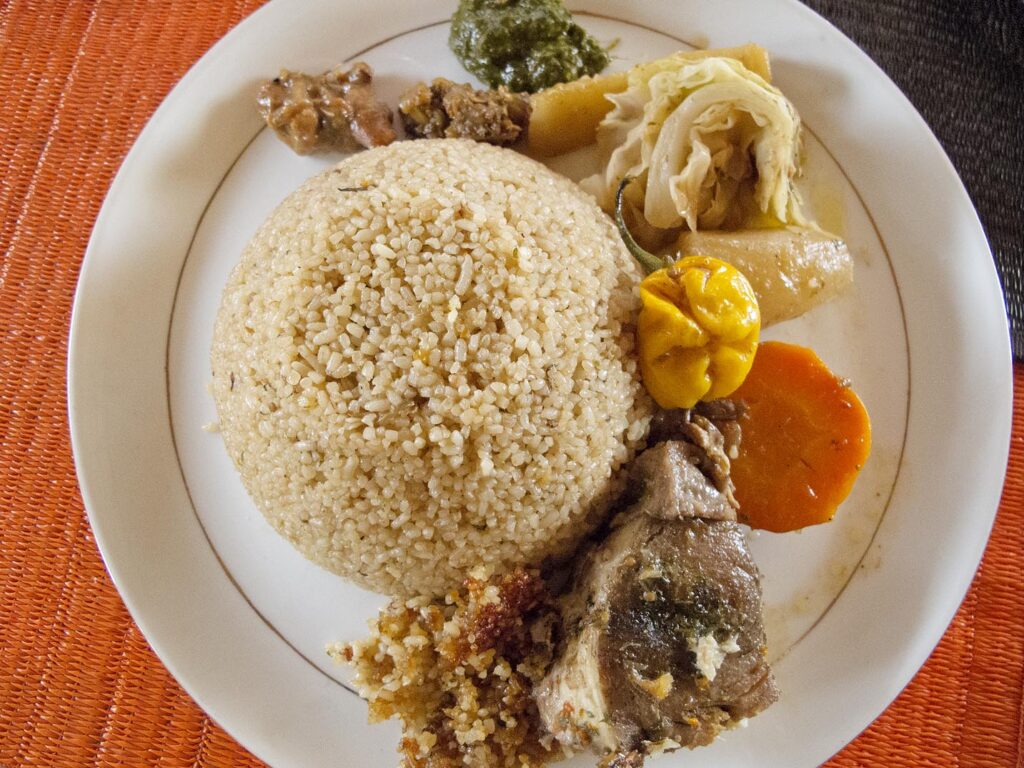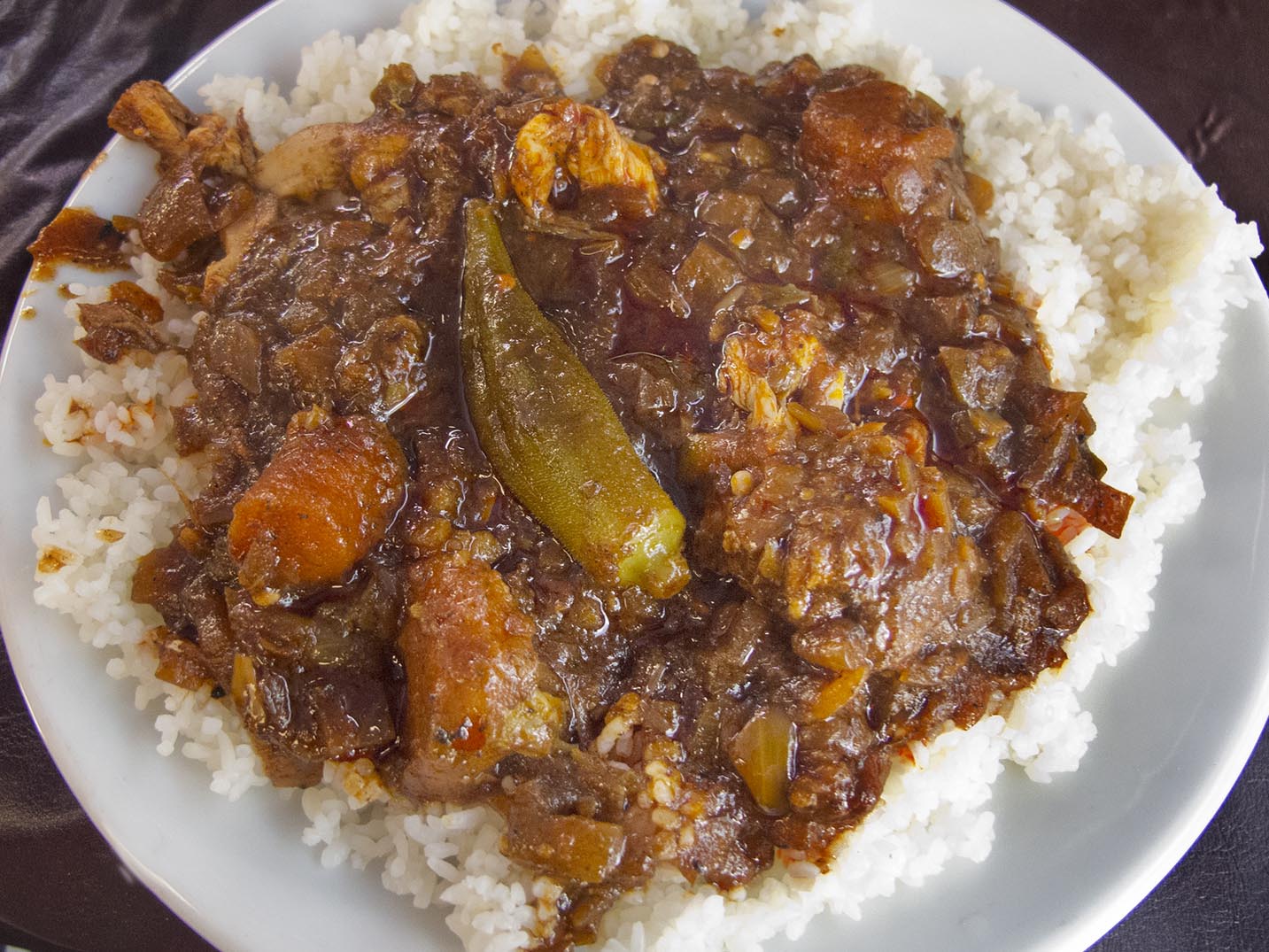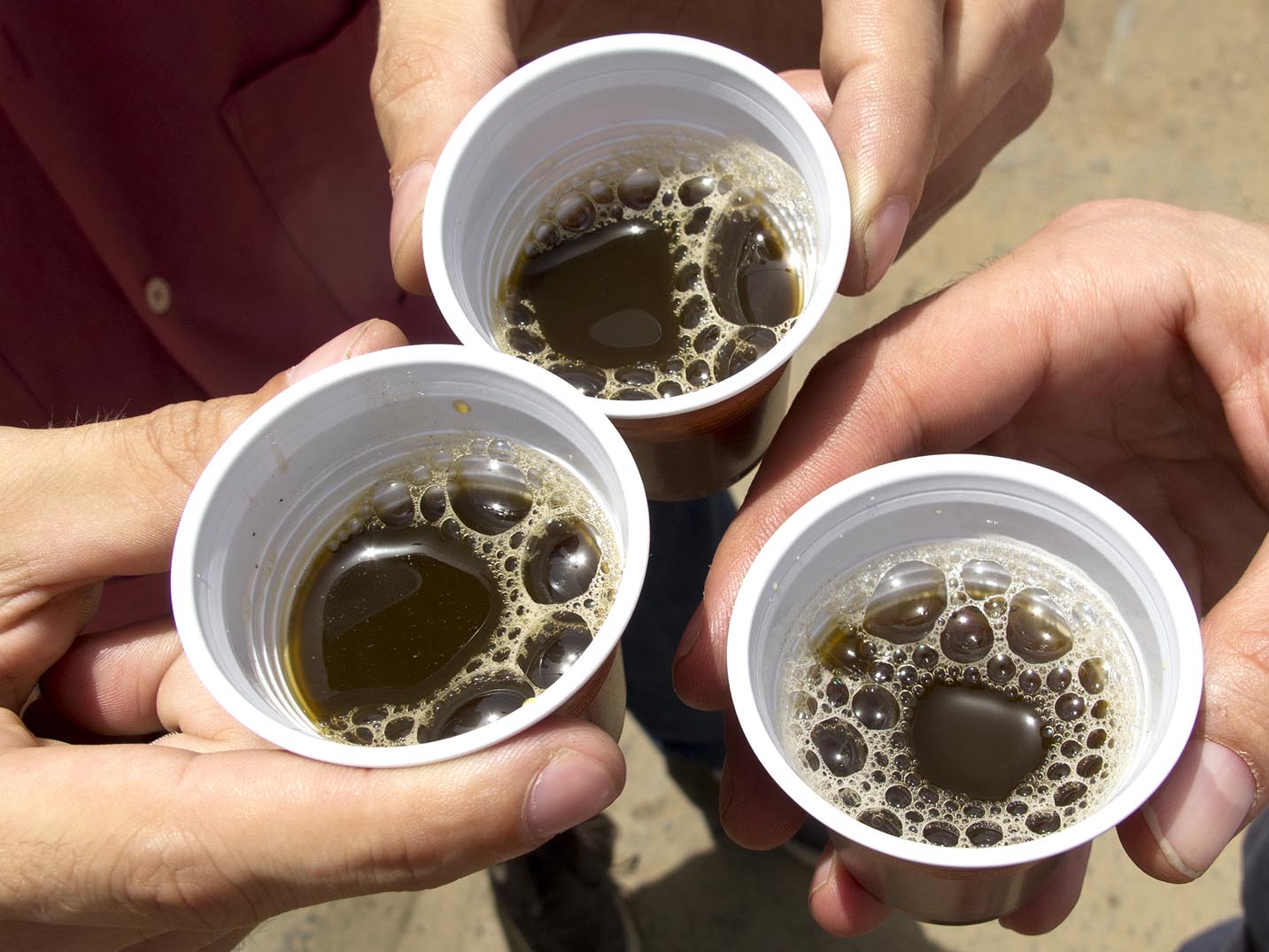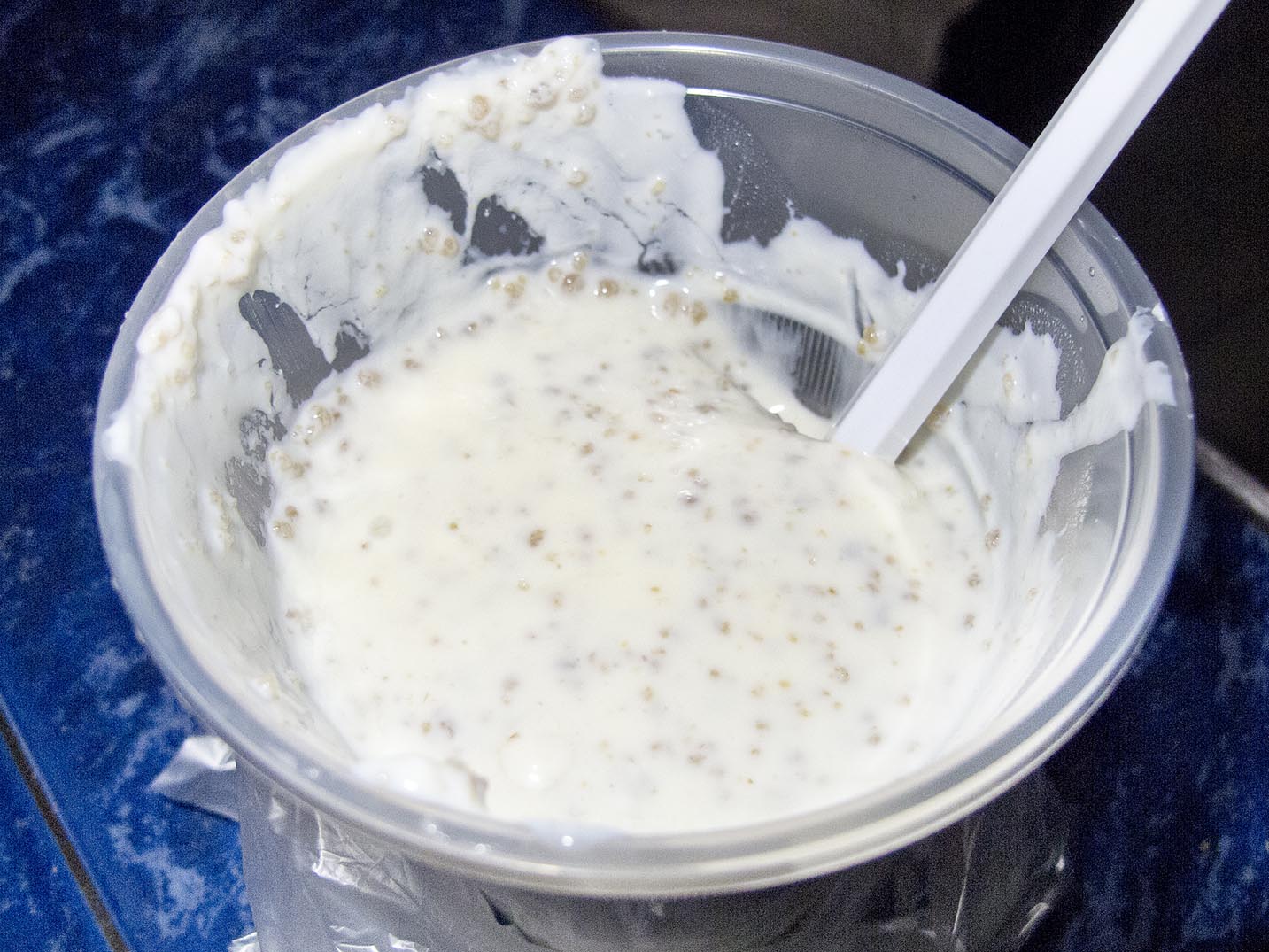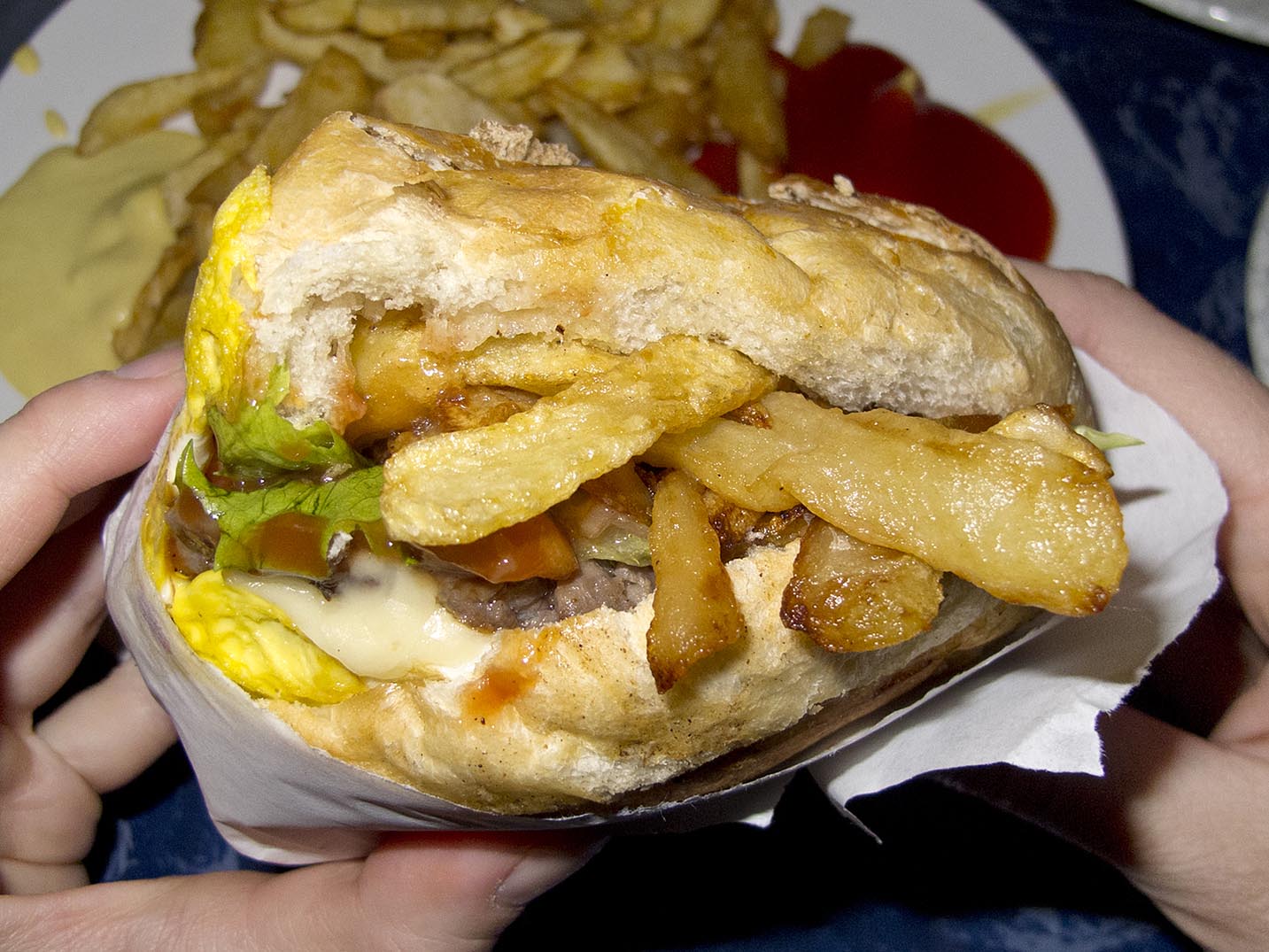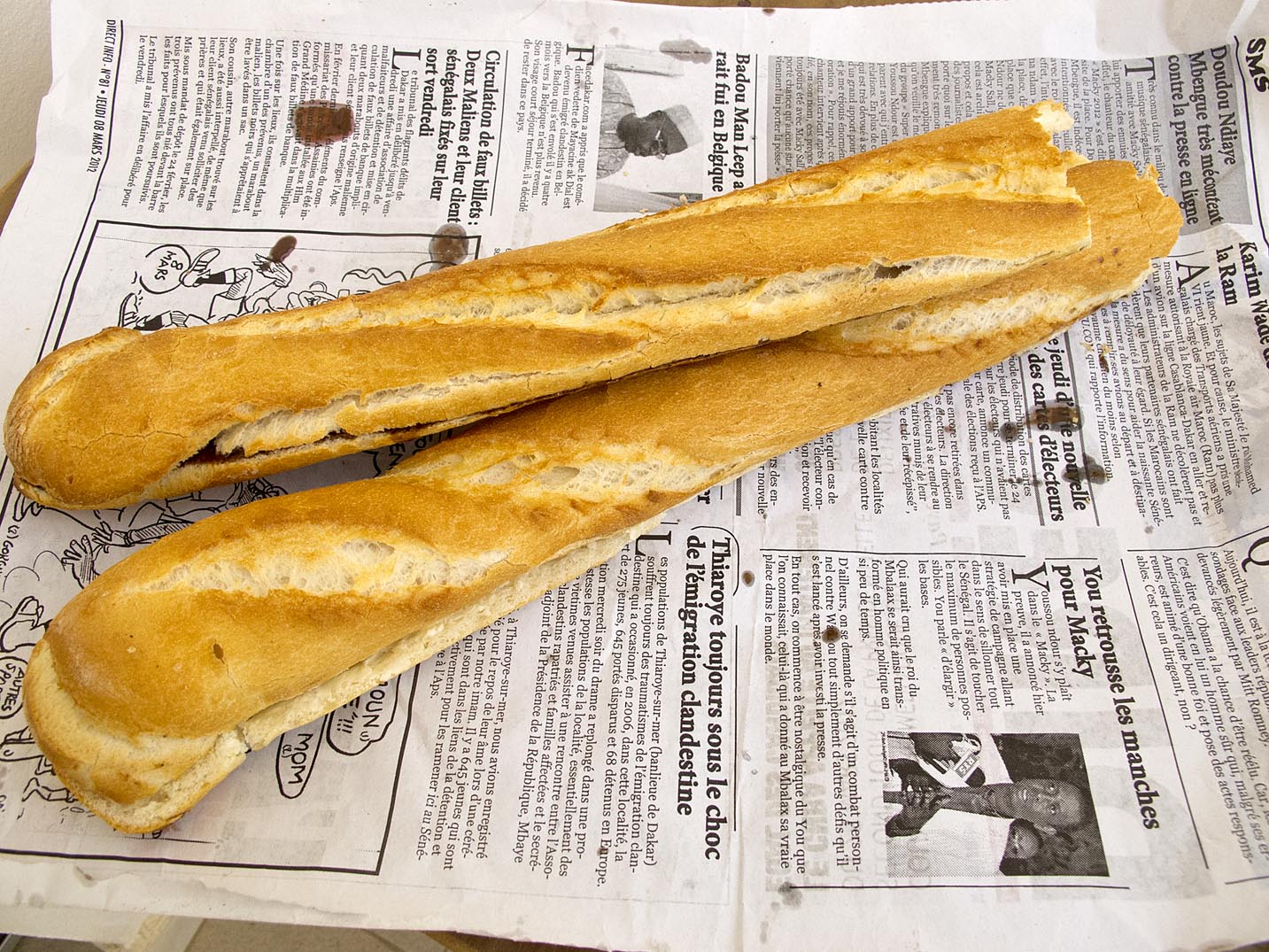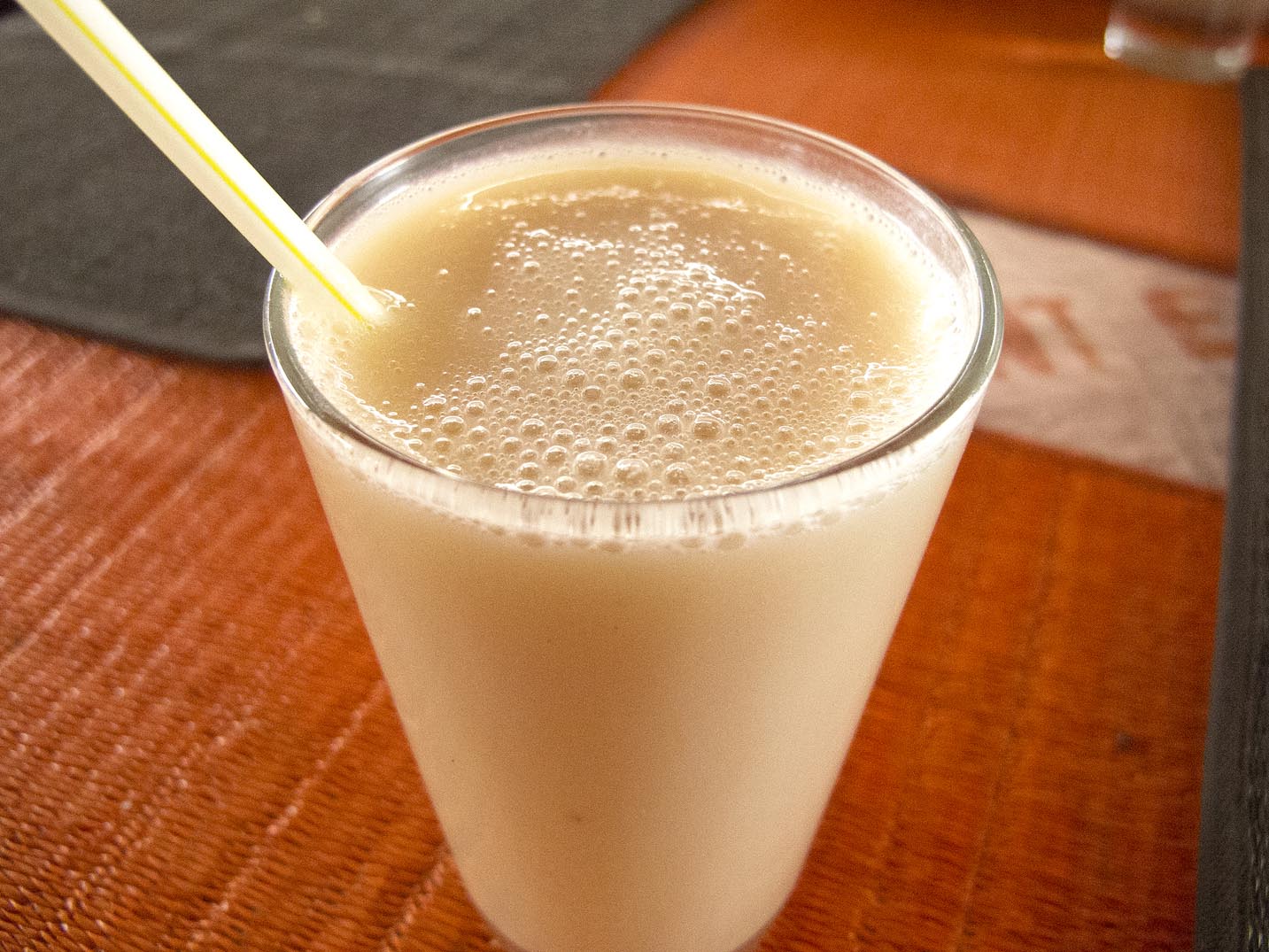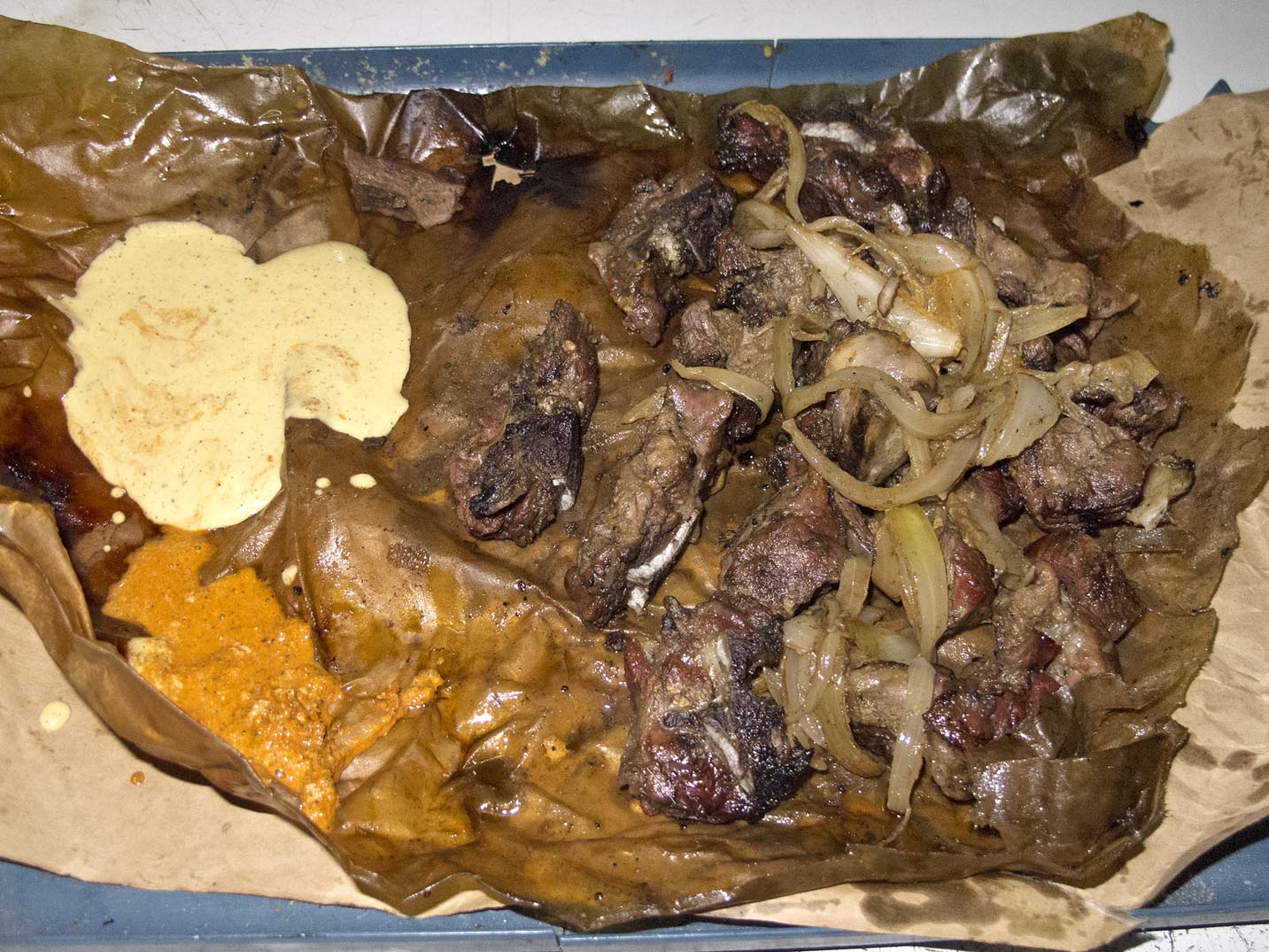The dish most associated with and beloved by Senegal—and indeed, eaten here for lunch several times a week—is ceebu jën, the native take on rice (“ceeb” in Wolof) and fish (“jën”). Hailing from St. Louis on Senegal’s north coast, ceebu jën consists of seasoned rice; a piece of grilled or pan-fried fish, stuffed with a garlicky paste (called the rof); and a few large pieces of vegetables—carrot, cabbage, cassava, turnips, etc.
Then there are the accoutrements: dahkar (mouth-puckering sweet-sour tamarind), xooñ (the crispy burnt rice scraped from the pan’s bottom), and bissap, a slimy, sour green sauce made from hibiscus leaves (not to be confused with bissap the juice, made from hibiscus flowers). Traditional seasonings include gejj, or dried fish, and yéet, a dried shellfish; then, depending on whether there’s sweet tomato paste in the rice, it’s ceebu jën rouge (red) or blanc (white). It’s not hard to love this dish—the flavors are fresh, bold, and surprising, even. The hits of tart balance against the sea-salty savoriness, and the textures are beautifully varied. It’s delicious, generally inexpensive, and filling midday grub.
A note on spelling: You’ll likely see this dish spelled a variety of ways, including the common French spelling, thiéboudienne, but it’s always pronounced the same: “cheb-o-jen.” Unless it’s abbreviated to just tcheb—that happens sometimes too.
Good to know: Because it’s cooked in been cin (or benacin), Wolof for “one pot,” and incorporates crunchy burnt rice, ceebu jën is often compared to Spain’s paella and Creole jambalaya, itself likely a descendent of paella. To further confuse matters, there’s another benacin dish called jollof rice (likely derived from “Wolof”), which has become sort of a catchall West African rice dish found, in various incarnations, all over the region. In Senegal it is typically made at home, particularly for celebrations, but it differs a bit from ceebu jën in that it’s more like a fried rice.
Where: This ceebu jën is from Le Pointe E (+221-33-825-1515; Rue 5/Av. Birago Diop and Rue G; map location approximate), an inviting, breezy little restaurant in the Point E neighborhood. The small daily menu, usually about three dishes, is scrawled in chalk near the door, but ceebu jën is very often offered at lunch.
When: Mon-Fri, noon-4pm, 7pm-11pm; Sat, 7pm-11pm. Ceebu jën is considered a lunch dish, not dinner.
Order: We had the ceebu jën blanc (2,500 CFA), which came presented in the manner typical of most restaurant tchebs: a large mound of short-grain rice covering 75 percent of the plate, with the grilled fish, steamed hunks of veggies, and sides curled around it, including a dangerously hot habanero pepper. The fish had been properly stuffed with some garlic, onion, and parsley. The rice tasted like good fried rice, salted and oiled; the bissap sauce, with the consistency of creamed spinach, provided a nice, complementary tartness when mixed in, as did the tamarind (watch out for the seeds). The pile of xooñ—just like paella’s sought-after, crusty socarrat—offered some wonderful crunchiness to the mix. We also tried the lamb dibi here, which proved a nice upscale version of the more down-and-dirty street dish, and some delicious local juices.
Alternatively: Though it’s most often prepared and consumed at home—and, given the Senegalese’s famous hospitality, you probably won’t have to try too hard to score an invitation to someone’s house for lunch—ceebu jën is not hard to find at any Senegalese restaurant during lunch. Downtown, Restaurant Le Djembe (33-82106-66; 56 Rue Docteur Theze, map) is a good bet for a similarly refined plate in cute, bright surrounds.
For a more unadorned take on ceebu jën, hit up the ladies who lunch (or rather make it) in front of Marché Kermel (map)—look for the makeshift tents and picnic tables Mon-Sat between about 11:30am-3pm, and request that your tcheb is dished out with a spoon—or go to the USAID Rice Shack up in N’Gor (map), where a woman named Adji serves this and various other dishes (see ceebu yapp) at lunch. At these street-stall spots, you’re generally served from one large bowl, more like it is served at home, so the various components will be a bit more mixed—and the prices much cheaper, with a plate going for about 700 CFA.

